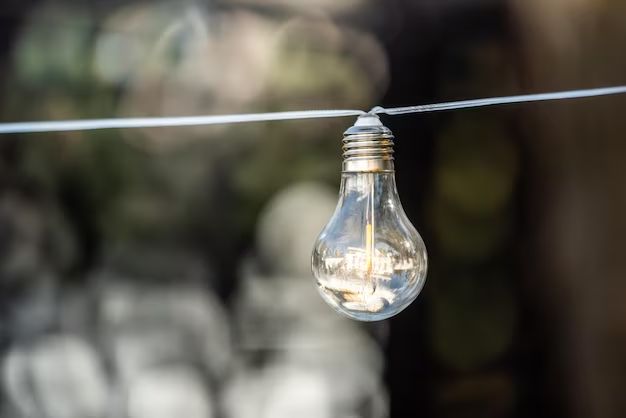Using LED bulbs in outdoor lighting fixtures is a great way to save energy and money while still providing bright, beautiful illumination for your home’s exterior. LED bulbs are designed to be durable and last a very long time, making them well-suited for outdoor use. However, there are a few considerations when using LED bulbs outdoors.
Page Contents
Benefits of Using LED Bulbs Outside
There are several benefits to using LED bulbs in outdoor fixtures:
- Energy efficiency – LED bulbs use up to 90% less energy than incandescent bulbs and last 3-25 times longer.
- Long lifespan – The average LED bulb lasts 25,000-50,000 hours compared to 1,000-2,000 hours for incandescent.
- Durability – LEDs are solid state bulbs with no filament or glass enclosure, making them resistant to vibrations and breakage.
- Brightness – LEDs provide equivalent or greater light output compared to other bulbs using less energy.
- Reduced maintenance – The long lifespan means fewer bulb replacements.
- Mercury free – LEDs do not contain hazardous materials like mercury.
- Cold weather performance – LEDs work well in cold temperatures unlike fluorescents.
By installing LED bulbs in outdoor spotlights, floodlights, or porch lights, you can realize these benefits and cut down on energy costs over time. The US Department of Energy estimates that replacing one incandescent porch light with an LED can save about $8 per year in energy costs.
Choosing Appropriate LED Bulbs
When selecting LED bulbs for outdoor use, you need to choose bulbs that are specifically designed and rated for outdoor/wet locations. Look for the following specifications:
- Outdoor rated – Bulbs should be marketed as outdoor, wet location, or damp location bulbs.
- Waterproof housing – Housings should be completely sealed to prevent moisture ingress.
- Aluminum heat sinks – LEDs generate directional light and heat, so heat sinks help dissipate heat.
- Operating temperature rating – Look for bulbs rated down to -30°C/-22°F or lower.
- Durable materials – Housings should be impact and shatter resistant.
- Energy star certified – Bulbs should meet Energy Star guidelines for efficiency and performance.
Choosing bulbs designed for wet/outdoor use will ensure they last a long time despite exposure to weather and temperature extremes.
Using Fixtures Rated for LED Bulbs
In addition to using outdoor-rated LED bulbs, it’s important to check that your light fixtures are also rated for LED bulbs. Factors to consider include:
- Heat generated – LEDs may cause overheating in some enclosed fixtures designed for cooler incandescent bulbs.
- Driver compatibility – Check that LED driver circuitry is compatible with your fixture.
- Dimming – If fixture is dimmable, ensure LED bulb and dimmer switch are compatible.
- Light distribution – Directional LED light may distribute differently than omnidirectional incandescent bulbs.
Consult manufacturer guidelines to see if your specific outdoor fixture is rated for LED bulbs. Some fixtures may require retrofits or modifications to work properly with LEDs. Improper installation can lead to overheating, early bulb failure, or fire hazards.
Recommendations for Outdoor LED Bulbs
When shopping for outdoor LED bulbs, look for name brand products meeting the criteria listed above. Here are some good options to consider:
| Brand | Model | Lumens | Kelvin | Wattage |
|---|---|---|---|---|
| Philips | 100W equivalent PAR38 | 1600 | 2700K | 17W |
| Cree | 100W equivalent BR30 | 1600 | 5000K | 17W |
| EcoSmart | 75W equivalent PAR38 | 1000 | 3000K | 13W |
| GE | 65W equivalent BR30 | 800 | Daylight | 9W |
These are just a few examples of quality outdoor LED bulbs from leading manufacturers. Look for similar specifications from brands you trust. Pay attention to lumens for brightness, Kelvin for warm or cool light color, and wattage which affects energy use and light output.
Installation Tips
When installing outdoor LED bulbs, follow these tips:
- Make sure power is turned off at circuit breaker before replacing bulbs
- Wear gloves when handling bulbs to avoid oils damaging the LED surface
- Use a sturdy stepladder or proper lift equipment when accessing high mounted fixtures
- Ensure bulbs are screwed in completely and securely
- Insert bulbs carefully aligning pins properly in socket holes if applicable
- Point directional bulbs towards areas needing illumination
- Check that fixtures are tightly closed, gaskets/seals resecured
Taking proper safety precautions and following manufacturer’s instructions will help ensure correct LED operation. Test new bulbs at night to make sure lighting coverage and brightness meets your needs.
Troubleshooting Issues
If you experience any problems after installing outdoor LED bulbs, here are some troubleshooting tips:
- If bulb doesn’t turn on, check electrical connections and power to fixture.
- For flickering, replace defective bulbs and check compatibility with dimmers/sensors.
- If bulbs burn out prematurely, ensure wet location rating and check fixture ventilation.
- For dim light, replace old bulbs as LED efficiency decreases over time.
- If bulb buzzes or blinks, electrical wiring may need to be inspected.
- For uneven light distribution, re-aim directional bulbs as needed.
In most cases, issues can be corrected by replacing problematic bulbs, verifying compatibility with the fixture, and proper installation. Consult the manufacturer if problems persist.
Conclusion
Installing outdoor LED bulbs is an easy way to improve your home’s exterior lighting for safety and aesthetics while saving on long-term energy costs. Look for LED bulbs designed specifically for wet, outdoor use that have durable housings and are rated for cold weather operation. Verify fixture compatibility, properly install bulbs with safety precautions, and troubleshoot any issues that arise to best experience the benefits of outdoor LED lighting.
